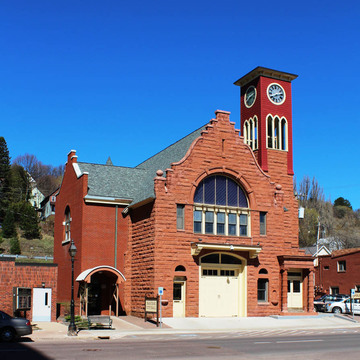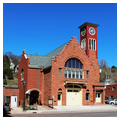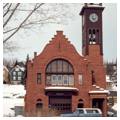You are here
Hancock City Hall (Hancock Town Hall and Fire Hall)
The town and fire hall was constructed during the time when the local mining industry achieved one of its greatest periods of growth. It is built of evenly coursed, rock-faced, clear reddish-brown Portage Entry sandstone, in a manner reminiscent of H. H. Richardson. The two-story building has a square clock and hose drying tower at one side, above which was originally set a tall spire, and a broad-arched front window. Dutch and Flemish influence are evident in the stepped and curved front gable. The building housed the fire department on the first floor and the village offices and council chambers on the second. This solid town hall symbolized the stability, security, and permanence of Hancock in a region of many transitory and impermanent mining towns.
Writing Credits
If SAH Archipedia has been useful to you, please consider supporting it.
SAH Archipedia tells the story of the United States through its buildings, landscapes, and cities. This freely available resource empowers the public with authoritative knowledge that deepens their understanding and appreciation of the built environment. But the Society of Architectural Historians, which created SAH Archipedia with University of Virginia Press, needs your support to maintain the high-caliber research, writing, photography, cartography, editing, design, and programming that make SAH Archipedia a trusted online resource available to all who value the history of place, heritage tourism, and learning.





